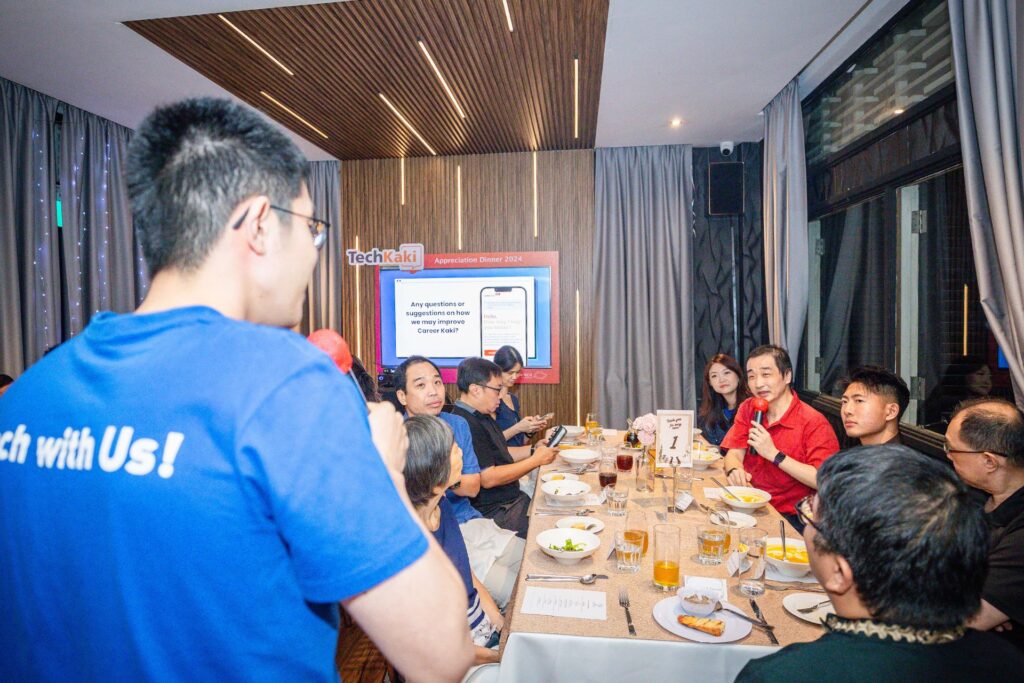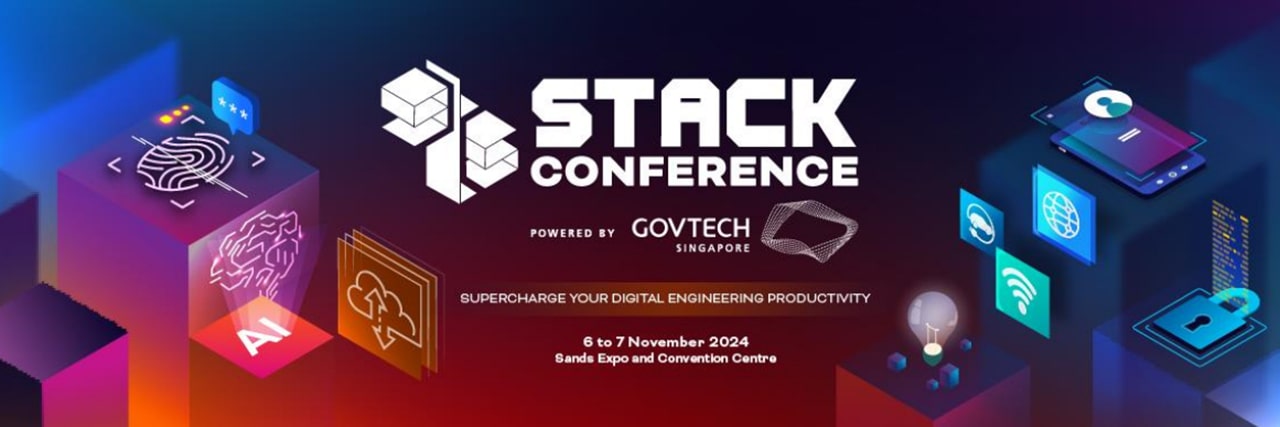Singapore is on the fast track to becoming one of the world’s most digitally advanced societies, and at the heart of this transformation is the Government Technology Agency, or GovTech. Since 2016, GovTech has been the driving force behind critical innovations like Singpass and the Singapore Government Tech Stack (SGTS)—platforms that have become the backbone of the city-state’s digital ecosystem.
As GovTech enters its eighth year, the agency’s mission is evolving. It’s no longer just about keeping pace with technological advances but also staying ahead—anticipating future demands and crafting solutions that will continue to shape Singapore’s digital landscape for years to come. But how does an agency of this magnitude navigate such rapid changes? What strategies are in place to ensure the resilience and security of Singapore’s digital infrastructure?
In a recent interview with KrASIA, Chang Sau Sheong, CTO and deputy chief executive (products) at GovTech, sheds light on the agency’s strategy to staying ahead in a fast-moving digital world, what new developments are on the horizon, and why events like the STACK Developer Conference are crucial milestones in Singapore’s digital journey.
The following interview has been edited and consolidated for brevity and clarity.
KrASIA (KR): GovTech is in its eighth year of operation since its founding in 2016. Has its mandate evolved over this span of time, and if so, how?
Chang Sau Sheong (SS): We have largely kept to our purpose since formation—GovTech’s key mission is to engineer a digital government and make lives better by building tech for the public good.
However, the nature of GovTech’s work has evolved in response to changing challenges due to the demands of technological advancement, the need to ensure digitalization across the whole of government with new technologies as well as making GovTech competitively attractive as an employer so we can hire and retain tech talents that are in short supply.
KR: GovTech aims to develop technology that meets the needs of citizens and businesses, enhancing their quality of life. How are these needs identified?
SS: When developing new technology products, GovTech focuses on creating solutions that are easy, seamless, and secure for users, always prioritizing the needs of citizens and businesses. To achieve this, we regularly engage with both groups to gain a deep understanding of their requirements.
One of the ways we connect with citizens is through our 6,000-strong “Tech Kaki” community. This group is actively involved in focus group discussions, user testing, surveys, and other activities that help ensure our products and services remain relevant and effective.

In addition, we recognize the importance of strong industry partnerships. As the digital landscape evolves, our collaboration with industry players must become even closer. This year, we introduced a new format for industry engagement, featuring closed-door discussions that foster an ongoing dialogue aimed at achieving mutually beneficial outcomes. For instance, we are currently piloting streamlined compliance and procurement frameworks designed to make it easier for businesses to work with the government.
Furthermore, co-developing solutions with industry partners using common reusable tools, such as the SGTS and commercially available software-as-a-service options, is a key component of our digital government strategy. By leveraging these tools, we avoid reinventing the wheel, reduce costs, and accelerate the time to market for new solutions.
KR: Technology is moving faster than ever before. How does GovTech interpret and respond to these developments?
SS: We see cyberattacks becoming more sophisticated and prevalent. With the growing reliance on the government’s digital services by citizens and businesses alike, maintaining public trust in our national digital infrastructure has become a critical challenge, particularly in the face of potential system disruptions and cyber threats.
This is why we are placing greater emphasis on protecting our key products and minimizing the impact of disruptions. We strive to stay ahead of cybersecurity threats and build resiliency to ensure that critical government systems do not get compromised. Achieving secure digitalization requires constant vigilance.
For example, since its establishment in 2022, GovTech’s Government Cybersecurity Operations Centre (GCSOC) has played a pivotal role in enhancing the monitoring and defense of Singapore’s government systems against cyber threats.
Over time, GCSOC has expanded its oversight to include the government’s ICT infrastructure within the cloud and has implemented scans to detect vulnerabilities in internet-connected assets. These capabilities are bolstered by automated technologies and the integration of cyber threat intelligence, enabling us to correlate threat data from multiple sources and strengthen our overall cybersecurity posture.
KR: GovTech has been pivotal in providing digital identities through Singpass and introducing tools like TraceTogether during the pandemic. What is the agency’s next north star?
SS: GovTech serves as an enabler in the journey to identify the next north star. We continue to innovate and build new capabilities in a fast-changing technology landscape and extend this transformation across the entire government. We also monitor existing tech trends, upskill staff and enhance products with promising new technologies.
Essentially, we help agencies develop the capabilities they need to take ownership of their digital transformation.
KR: If you had to rank GovTech’s projects based on their impact, which one would top your list, and why?
SS: It is challenging to single out one project as each GovTech product is developed to address a specific problem for a distinct audience. Hence, the impact of each product varies based on the issue it addresses and the needs of the target users.
KR: GovTech runs its flagship event, the STACK Developer Conference, biennially. What is the vision behind this initiative, and how does it differ from the STACKx events?
SS: The STACK Developer Conference is the largest government-led developer conference, serving as a platform for the government, industry, and tech communities to gather and collaborate on opportunities that further Singapore’s “Smart Nation” vision. It fosters a culture of continuous learning within the developer community and serves as a hub for the free exchange of knowledge, ideas, and solutions.
The conference also offers a two-way platform where developers can learn about government projects, offer feedback for improvement, and connect with the teams behind these initiatives.
The smaller STACKx events offer a platform for deeper discussions and learning opportunities centered around technology. These events promote the adoption of centrally developed digital solutions and facilitate knowledge exchange between the government and industry. STACKx also allows for deep dives into specific areas of technology, such as data and artificial intelligence.
KR: What can we expect from this year’s STACK Developer Conference compared to previous iterations?
SS: Over the years, STACK has remained true to its roots as a technical event, consistently focusing on topics directly relevant to ICT professionals. The inaugural conference in 2018 centered around the launch of the SGTS and the promotion of cloud adoption, drawing 1,000 attendees to the physical event.
In 2020, the conference transitioned to a virtual format in response to Covid-19 restrictions, with a continued emphasis on cloud adoption and technologies that became essential during the pandemic. Since then, STACK has adopted a hybrid format to meet the increasing demand for virtual participation while reaching a broader audience.
This year’s STACK, themed “Supercharge Your Digital Engineering Productivity,” introduces a new product showcase segment. Attendees can visit booths to explore specific products, participate in onsite demonstrations, and engage directly with spokespersons.
The showcase will feature over ten GovTech products, including applications designed to create secure digital spaces, underscoring our commitment to fostering trust in the digital realm. Additionally, attendees will learn how AI can be leveraged to enhance developer productivity.
KR: Who stands to benefit most from attending the latest edition of the conference in Singapore this November?
SS: The latest edition of the conference will benefit a wide range of tech professionals, including software developers, system architects, cybersecurity specialists, UI and UX designers, and data engineers from both the public and private sectors.
Attendees will gain insights into the latest tools, frameworks, and best practices, focusing on enhancing productivity. Private sector professionals can explore GovTech’s open-source tools like Purple A11y and learn from case studies on AI and cloud technologies. Those interested in collaboration with GovTech or other government agencies will find valuable opportunities for co-creation.
Public officers will also benefit by discovering GovTech’s suite of products, which can be leveraged to improve agency productivity. The conference serves as a platform for the tech community to unite, with sessions covering cloud technology, data and AI, digital culture, cybersecurity, and open-source collaboration, offering something valuable for every attendee.
Set for November 6–7, 2024, the STACK Developer Conference has opened early bird registrations, available until September 20. For more details or to register, visit this page.
This article was published in partnership with GovTech.

